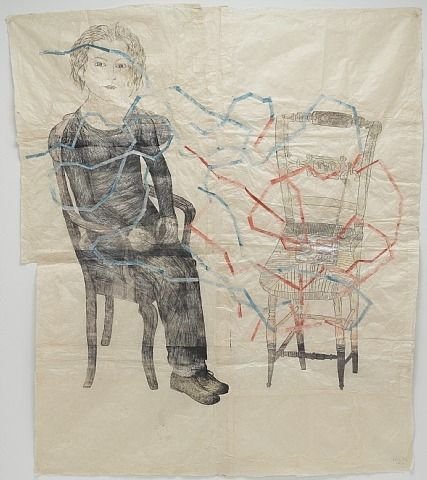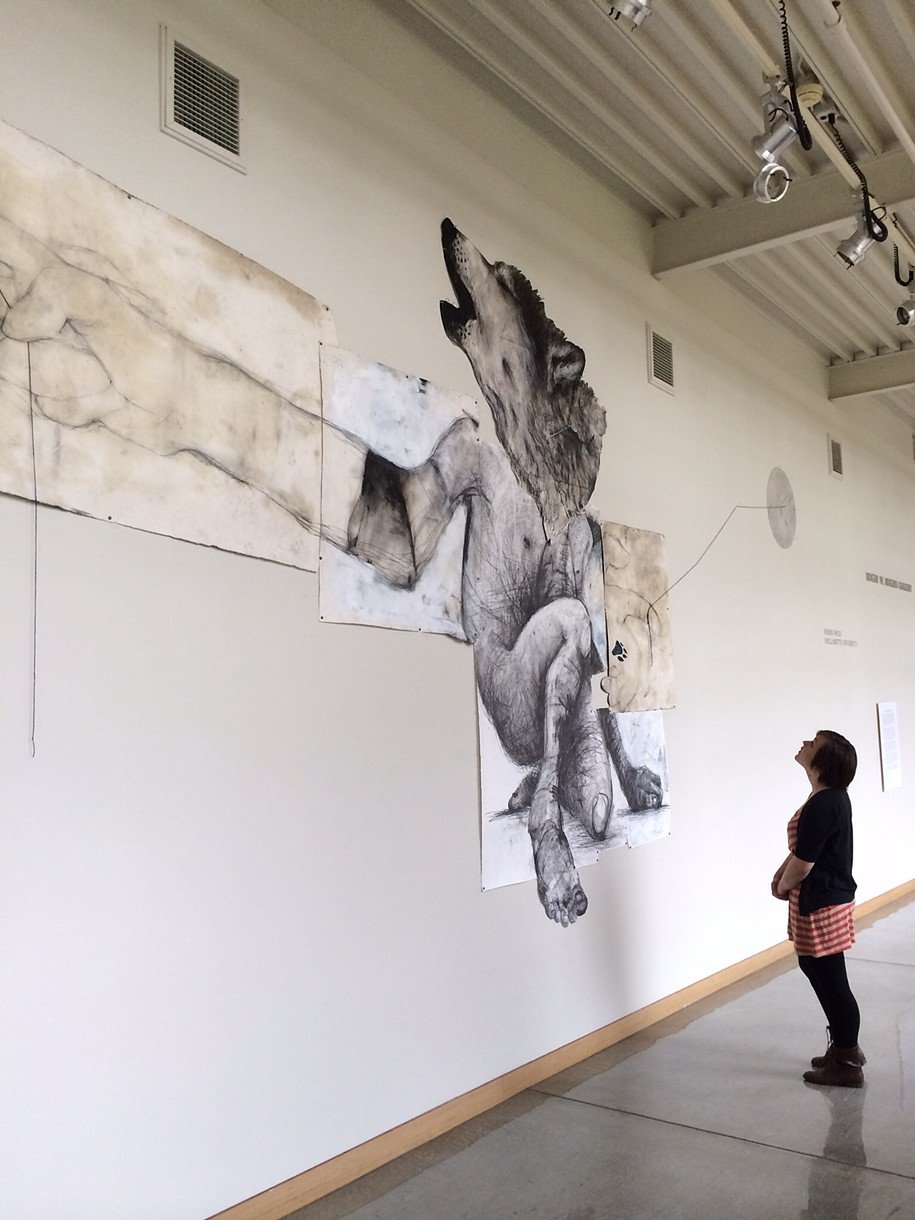Kiki Smith, concrete painting & further research
Friday 16th September - My tutor Sarah Pirrie recommended I look up Kiki Smith’s work, in particular the figurative works that feature collage.
Kiki Smith is an artist who is known for working with many different materials; glass, plaster, ceramic and bronze as well as paint, embroidery, printing and various textile techniques. Smith’s early work addressed in particular the human body. Representing the fragmented body both inside and out as well as how the body relates to the world that surrounds it was how she mastered its representation and demonstrated its importance… Her work also addresses collective themes of death, birth, regeneration and decay.
“I’d rather make something that’s very open-ended that can have a meaning to me, but then it also can have a meaning to somebody else who can fill it up with their meaning.”
“Basically, I think art is just a way to think. It’s like standing in the wind and letting it pull you in whatever direction it wants to go.”
Kiki Smith
Kiki Smith, Peacock, 1994. Papier Mâché and Nepal paper with ink
“Sometimes I have things that I want to do,” she says breezily. “But in general, I just go through the space, and then that tells you what to do.” She sounds laissez-faire, and there is a level of unpredictability to her planning: One venue might inspire a full body of work, while another might require a grouping of previous series into a new conceptual whole.
I’ve been thinking about going into the DVA gallery EXIT space where I will be having my exhibition and this quote from Kiki confirmed that I need to do that because the space well inform how I move forward with my work. I will ask next week if I can go in while they’re hanging the next exhibition.
Kiki Smith, Untitled, 2003. Works on paper, Ink on layered Nepalese paper.
In another interview on YouTube channel Foundation Thalie I was impressed by her humility and lack of pretence. She really feels like the art, or act of making guides her, that she wasn’t trying to say something but rather exploring her experience, following fascination, and just trying to live in her body.
Searching for Kiki Smith artworks lead me to other artists working in a similar way like the artist Andrew Myers, below.
Andrew Myers, Where-Wolf (Willamette University), 2014. Mixed media on paper with string.
This artwork stood out due to the scale and beautifully drawn and collaged drawings, along with the mixed media approach with the string creating shapes (a map outline?) on one side, and linking to the ‘moon’ on the other. When lit at night it transforms the work, as a were-wolf transforms due to the moon. This strongly speaks to me of how I need to approach the portrait of Macca, my husband for my final project.
Above: Daniel Segrove; Glen Skien; Steven Ketchum. Each artist has found their own distinct and unique visual language through a combination of drawing, painting, and mixed media.
The below works are by Eser Gündüz is an expressionist artist based in France. I’m impressed by his layering, creating his own visual language, abstract mark making, creating visual interest and harmony within very busy compositions.
Tuesday 20th September - Just went down a little rabbit hole of CONCRETE paintings! I was looking up the artists that I am exhibiting alongside; Craig Smith and Steven Baddeley, and I stumbled across a South African artist called Craig Smith that works in CONCRETE. Mind blown. I’m not sure why I’m so drawn to it but I think it’s because its gritty, raw, and tactile… and unexpected. Smith uses it with charcoal, as does Leszek Skurski whose work I was drawn to also which features small black figures in an abstract landscape. Another Australian artist Ben Parker works exclusively in concrete, some in natural greys, others in colour, all abstract.
Isabelle De Kleine, 2017, IN-CONCRETE. Watercolour, gouache and acrylic on paper.
Friday 23rd September - I came across this work by De Kleine due to its’ title, it immediately stood out for me. It has a surrealist dream-like feel, with the double faces seeming to speak to time passing. This quote from her is beautifully poetic
“I am exploring the fragility of memory and the way our thoughts are every changing. Memory is often viewed as something finite and everlasting, but in reality there is no certainty.
Grey tones and impasto medium were used to create a weight to the background layers which is contrasted with the soft feminine expression and floral references exemplifying the strength and fragility of our mind. In-Concrete also references fashion and beauty standards, looking at the expectation on femininity and softness.”
This sense of time passing is something I’d like to experiment with in my portrait of Macca for my final project. It’s also something that could potentially be used in my riso project.





























